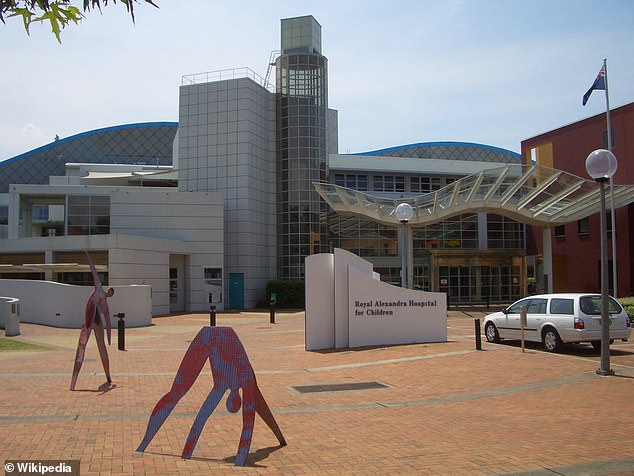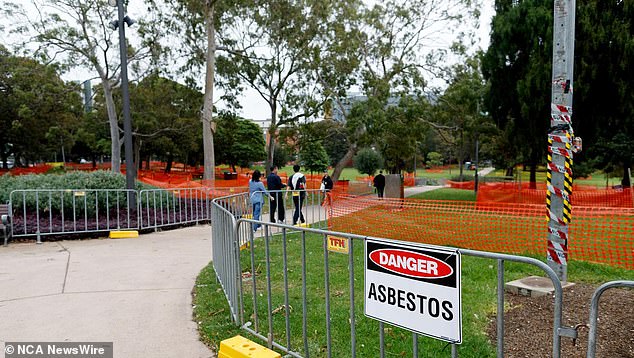<!–
<!–
<!– <!–
<!–
<!–
<!–
A children’s hospital has been added to the list of more than 50 places where asbestos-contaminated garden mulch was found.
Nearly 800 locations in New South Wales, including schools and parks, have been tested for the deadly substance since it was first found in mulch at the newly opened Rozelle Parklands in January.
The total number of sites testing positive has risen to 54 as of Thursday, according to the latest data from the New South Wales Environmental Protection Agency (EPA).
A construction site at Westmead Children’s Hospital, Bicentenary Park in Glebe and Oran Park fire station have tested positive for low-risk asbestos.

A construction site at Westmead Children’s Hospital (pictured), Bicentenary Park in Glebe and Oran Park fire station have tested positive for low-risk asbestos.
A garden bed along the Rozelle crossing at the Iron Cove Bridge also tested positive for higher-risk friable asbestos.
Transport for New South Wales fenced off the site on Wednesday night and mulch removal has begun, although it could take several nights to complete.
New South Wales Premier Chris Minns said the crisis is a “big problem” and emphasized the seriousness of the incident.
“The EPA is investigating it, it’s a serious crime and the fines are up to $2 million,” he told reporters Thursday.
However, he assured the community that the contamination, while concerning, is not a major health issue due to the bonded nature of the fibers, which makes them less likely to become airborne.
“This is bound asbestos, it’s not safe and we don’t want it in our community, but the risk is not as serious as if you had asbestos fiber in your backyard.”
Three sites also returned negative results after precautionary testing, including St. Justin Catholic Elementary School,
St Benedict’s Catholic College and Sutherland Hospital.
These results are in addition to the 798 negative results analyzed by the EPA since January 10.
Precautionary testing will continue at several sites in New South Wales, including the South Coast, Central Coast, Central West and Hilltops region.


Nearly 800 locations in New South Wales, including schools and parks, have been tested for the deadly substance since it was first found in mulch at the newly opened Rozelle Parklands in January (pictured, Victoria Park).

